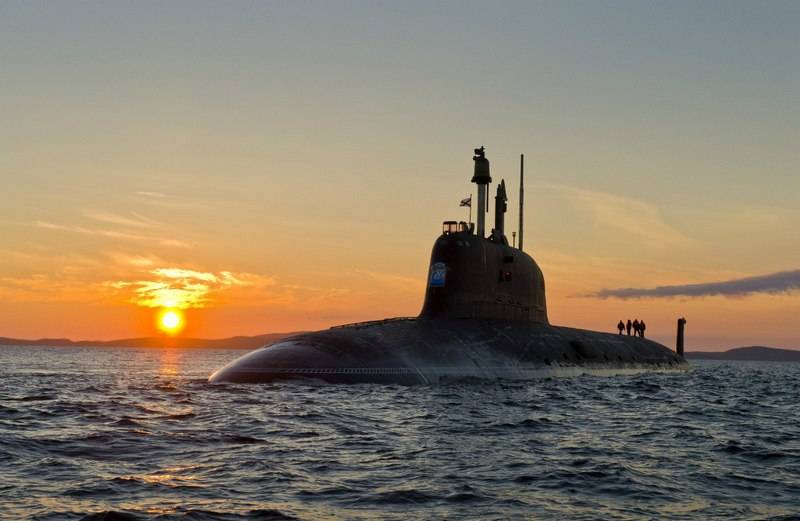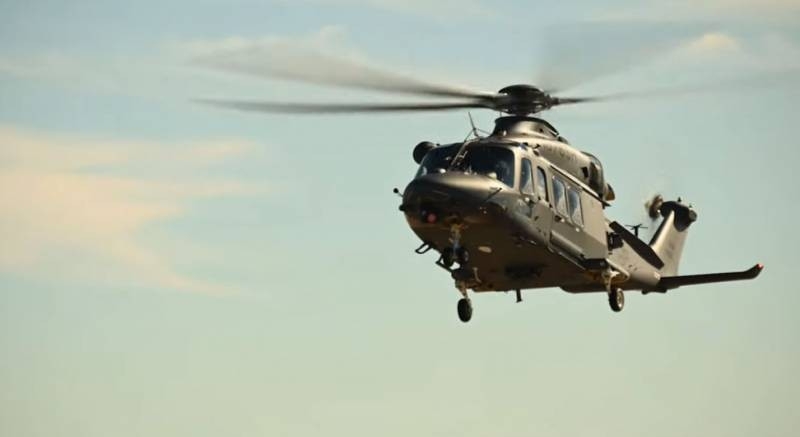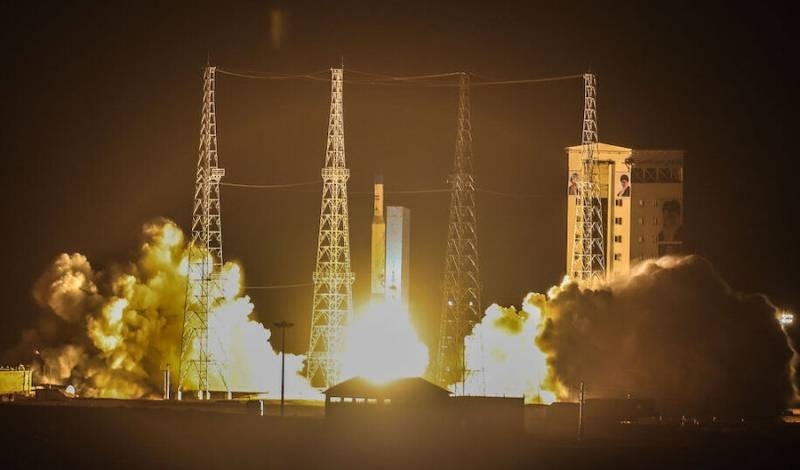
Launch ILV “Simurg”
In Iran 22 April, early in the morning, a successful launch of a space rocket took place (RKN) called "Qased". "Kased" translated from Farsi means "Messenger". As officially reported, the spacecraft was launched during the launch (KA) «Noor» ("Nur" means "Light"), which was declared "Iran's first military satellite".
Iranians successfully launch satellites into orbit not for the first time, although the number of successful breeding is still very small, not even a dozen of them. What is interesting about this launch?
Your companions ...
The first Iranian satellite entered a circular orbit with an altitude of about 700 km on our ILV “Space-3M” at 2005 year 27 October during a cluster launch with a pack of 8 small spacecraft, including our “Mozhaets-5”, and also Chinese, British and other satellites. That satellite was called Sinah-1 and was considered one “Earth remote sensing satellite” (DZZ), and others and a species scout of a primitive level. of course, the difference between peaceful remote sensing and military aerial reconnaissance is almost the same “great”, as between your scouts and other people's spies, because it's clear, that a peaceful spacecraft may well take pictures for the military, even if not quite satisfying them in quality and resolution, but in 80% military cases and this quality will suit. And this practice is common in the world., not excluding our country, where to surgery, let us say, in Syria, ERS satellites are also involved “Resource-P” and a number of others.
Sinah-1 was also officially considered “telecommunications” KA, true, it is unlikely that this apparatus could contain serious communication equipment together with electro-optical visual equipment with its mass in 170 kg, but could send some messages. Following the Sinah-1, it was planned 2 Spacecraft of Iranian-Italian design, but the Italians were forced to withdraw from the project for sanctions reasons. The next spacecraft and the first, withdrawn by the Iranians on their own, became Omid - telecommunication (capable of primitive signal relaying) microsatellite mass 27 kg, launched into orbit 258x364 km by Iranian ILV Safir (“Ambassador”) 2 February 2009 g. This 40-cm “cube” (its shape was cubic) stayed in orbit 2 months and then got off her.
... and their carriers
The 26-ton carrier Safir itself was a liquid-propellant rocket., created on the basis of military missiles, and, if we really delve into their North Korean-Iranian roots, goes back to our operational tactical missile (OTR) “Elbrus” Р-17М. Next start “Sapphire”, true, improved modification 1A, was also successful, at 2011 g. micro-spacecraft Rasad-1 was launched, also a species reconnaissance or remote sensing satellite, how you look. Of course, confused by “flying camera” weight 15 kg in any case a little, even now such devices are not able to take any detailed pictures, but there is nothing to say about a decade ago. Serious military species scouts weigh tons, optics on them are large and massive.
Total “Safirs-1” modifications 1, 1A, 1B and 1B + were launched into space 6 time, were successful 4 attempts, yet 1 the launch was test without load and 1 did not take place, because the media jerked on the launch pad even before launch. apparently, with dressing smartened. This is exactly his secret, remark, satellite image posted last August by Trump on Twitter, what caused anger among their own scouts. but it is clear, what to have a carrier with a maximum load in 65 kg in low orbit, of course, not serious, this is not a space program, and the circle of young technicians turns out.
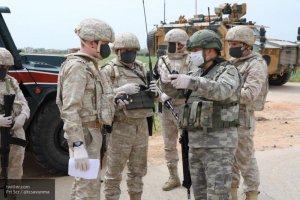
Turkish Defense Ministry Announces Fifth Joint Patrol with Russian Armed Forces in Idlib
Iran has another carrier, РКН Simorgh (“Simurg”, also known as “Sapphire-2”) weight 77-85 t, also built on the basis of liquid engines in both stages (also of military origin, in particular, medium-range ballistic missile, BRSD, Ghadr), and the upper stage there is also liquid. This ILV is designed for a payload of 150-200 kg. But from 4 launches were successful for the first, when there was no load on board, and partially successful - the last, 9 February this year,, when the 113-kg telecommunications spacecraft Zafar (“victory”) was launched to a circular orbit with an altitude of approximately 530-540 km, but the withdrawal rate was 6,5 km / s instead of required 7,7 km / s, and the satellite did not remain in orbit. The Iranians, after admitting their failure, immediately declared, before the end 2021 g. intend to produce more 5 space launches. All of these launches were carried out by a civilian organization., Space Agency of Iran, and carrier, despite its military origin, also civil. Although the combat crews were still military, just formally considered civil. And satellites, despite the apparently dual purpose of a number of them, - also formally civil. And the imam Khomeini cosmodrome is also a civilian.
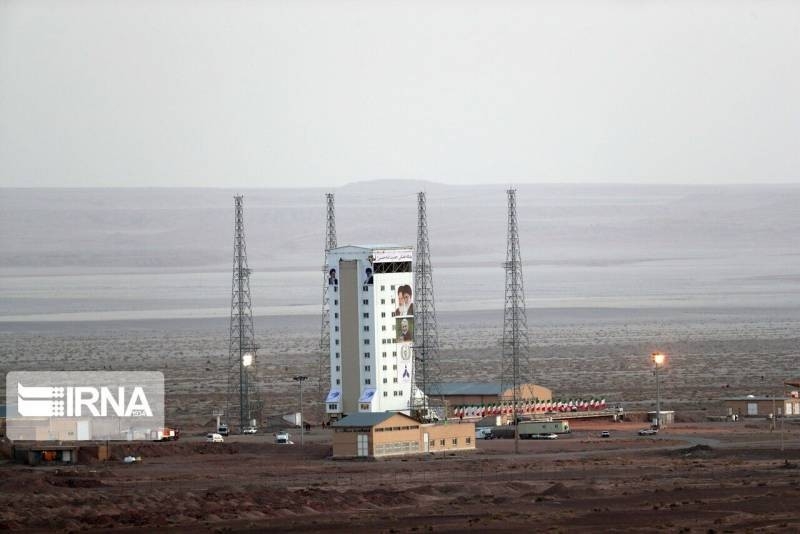
RKN “Simurg” at the cosmodrome inside the assembly and testing building. As you can see, quite civil type building
First military, who is not the first military man
But the current launch was officially carried out by the military., namely the IRGC, more precisely, AKS KSIR, Aerospace Forces of the IRGC Iran (sometimes they are translated as VKS IRGC, Similarly, understandably, with our videoconferencing). And Shahrud test center, and carrier, and the apparatus itself belongs to the Islamic Revolutionary Guard Corps, that's why they announced it “the first military satellite”. KA “Nur” launched into an approximately circular orbit 426x444 km with orbital inclination 59,8 degrees.
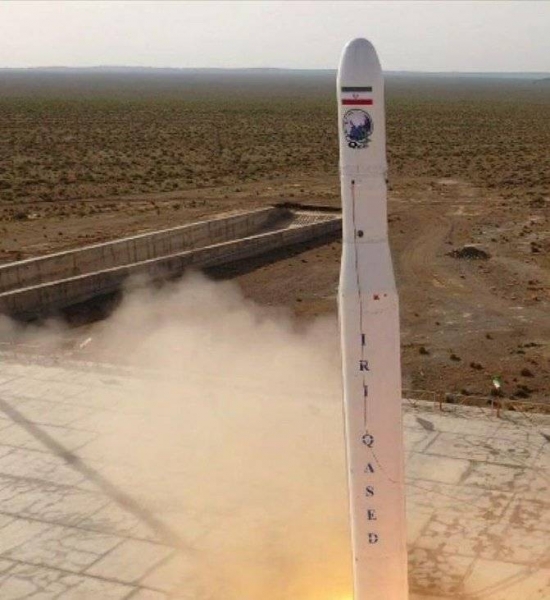
New ILV “Kased” at the start
Now about the rocket. RKN itself “Kased” - two-stage, the first stage is liquid, and the second is solid fuel. There are different versions of the origin of the first stage. The first is the same first stage from Safir-1B, but modified. This version is opposed by the fact, what step “Cassette” longer, and, probably, thicker “safirovskaya”. The second version is a step from the ILV “Simurg”. But also unlikely, she looks fatter, although it is not yet possible to determine the exact dimensions. There is another option, that they took the first stage from the liquid IRBM Ghadr-F - a fairly well-known missile, them the Houthis from Yemen more than once hit targets in Saudi Arabia. true, first stage engine torch “Cassette” is different, perhaps, this is a modernized version. Basically, all these options “relatives among themselves”. the engines and the stages themselves belong to the same rocket family.
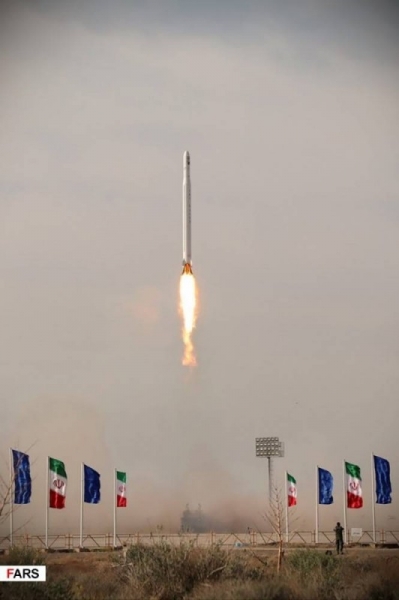
Launch of a new ILV with a new satellite “Nur”
The second stage is solid propellant and is based on a new solid propellant engine with a deflected nozzle. “Salman”, which was presented in early February by the AKS IRGC along with the new operational-tactical missile Raad-500, the development of the Fateh series missiles, modification of which, Fateh-313, Iranians, along with others, attacked American bases in Iraq. “Salman” was declared as “second stage engine” for new combat missiles with increased capabilities and for launching loads into space”. And here he successfully brought the payload for the first time.. The carrier itself was launched from the launch pad, and the removal and installation on it was carried out by a road transporter-installer, which the, by the way, before the start did not move aside.
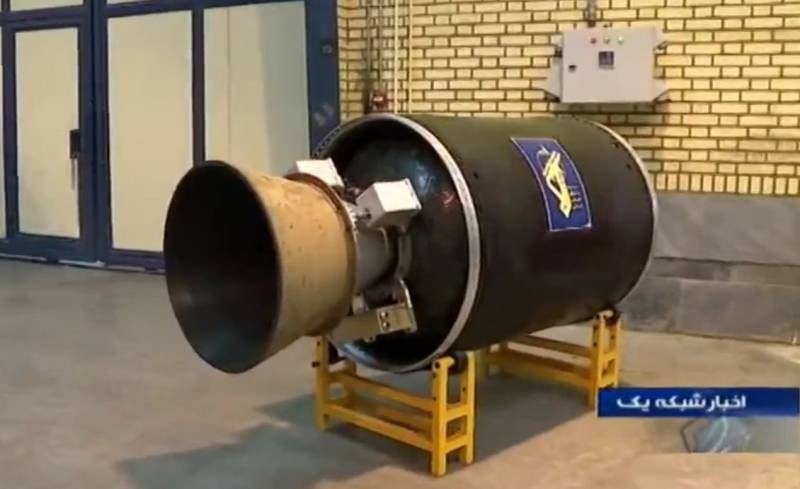
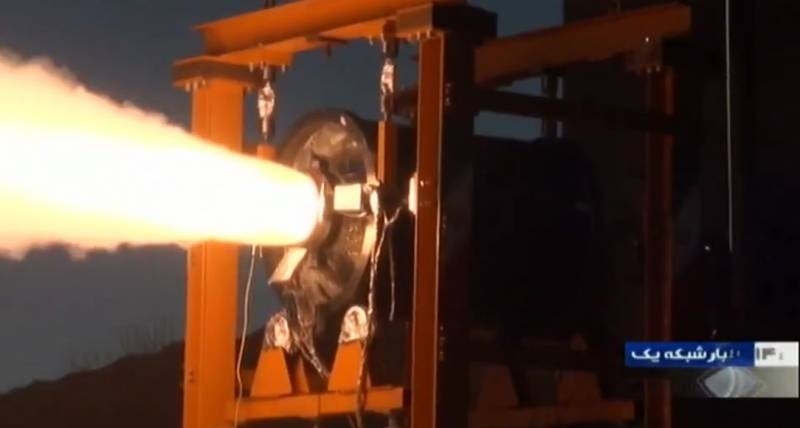
New solid-propellant second stage engine “Salman” at its presentation and at the fire test stand in the same Shahrud center, where they launched a new rocket
Lieutenant General Hussein Salami himself, commander-in-chief of the IRGC, after successful launch “multifunctional military satellite”, congratulated the people of the Islamic Republic of Iran on their success and stated: “This important achievement means strengthening the strategic intelligence capabilities of the Corps.”. That is, this CA, undoubtedly, species scout.
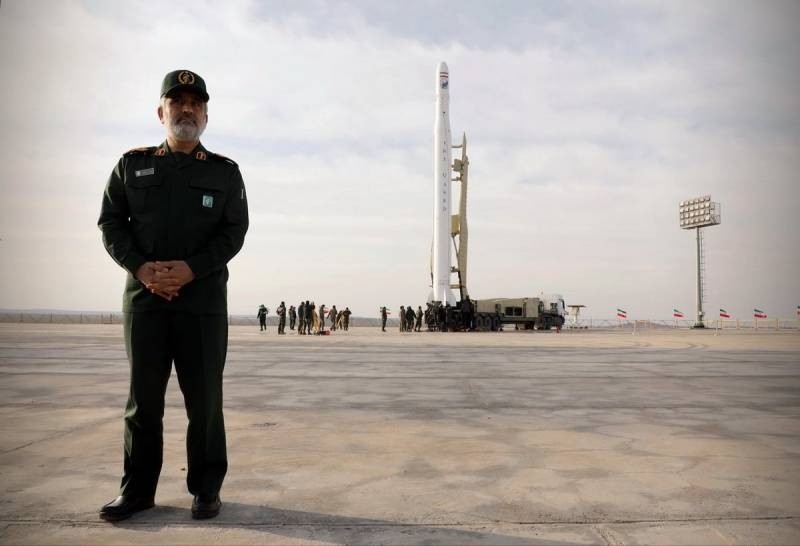
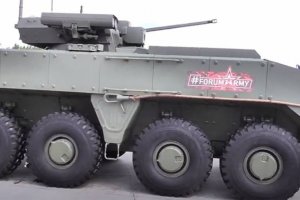
Following the minister’s statement: following the T-14 Armata tank, they are "trying to send" Kurganets and Boomerang to Syria
The commander of the AKS IRGC General Hajidzade against the background of the ILV “Kased” with satellite “Nur”, transporter-installer and launch pad
Rocket dualism
Americans love to announce each Iranian space launch. “violation of the sanctions regime” and Fr. “creation of ICBMs under the guise of launches of ILV”. What I would like to note on this occasion? There is some truth here. Yes, undoubtedly, all Iranian ILVs have military roots, like many ILVs in general, including the very first, on which mankind took its first steps into space: royal “seven”, American “Atlas” and others. But good, powerful and reliable ILV, even if when there was an MRBM or ICBM, was a bad missile. The requirements for them are too different and over time they diverge further and further from each other.. ICBM must be ready for immediate launch within seconds, requirements for reducing the active section of the trajectory are becoming more and more stringent, for survival and other “camel bells and whistles, unnecessary at the zoo” (from a famous anecdote). But their load is much more modest., than the ILV of the middle and heavy class. Although at the same time, combat ICBMs being written off from the Armed Forces may well be good light carriers, there are many examples of this. Or their components can become parts of good media..
And the Iranians “military” and “space” the branch practically did not go far from each other. AND, of course, imagine instead of a satellite as a load, let us say, guided warhead, which are now equipped with many Iranian BRMD, BRSD and OTR, can. Of course, it will have to be altered for different entry velocities, etc.. And a nuclear charge can, if he was. And this second stage will suit a combat missile in the same way., and for her it is created, although the new first stage for the new combat missile AKS IRGC, probably, not yet, But what prevents Iran from testing military missiles? They can do it anyway, and there are more sanctions, what is, hardly will be. But ICBMs from “Cassette” obviously will not work - the wrong mass, not those opportunities, so this is also, generally, BRSD. Just more long-range. Iran, on the other hand, officially declares its combat missiles as having a range of no more than 2000 km - they took this self-restraint at one time voluntarily, to show your peacefulness. breakwater, our target is Israel and the US bases in the region, but we don’t care about Europe, and even our missiles don’t reach there. Well, they will quite fly to Bulgaria or Greece and with such a range, but do the key EU countries care about them? Another thing, that many Iranian MRBMs, according to their capabilities, are capable of flying and 3000 km and even more, but there are no launches at such ranges. But you still need to work them out, so they use combat stages in the space program.
But it is better to be a combat missile or completely solid fuel, or liquid, but with encapsulated tanks, and the launch is desirable from the transport and launch container and not from the launch pad. But the Iranian missilemen have not yet matured to all these intricacies - they have products, meeting only part of these conditions.
In any case, for the Iranian space program, the launch of a new small spacecraft on a new rocket took place, of course, considerable success, which the, of course, against the background of the great space powers does not look. But in general, of course, Iranians are great, despite the difficult situation with coronavirus in their country (which they experience better, than “advanced” EU countries), are also working on space and military programs. Iran of Russia at least is a country partially allied and certainly friendly, although with not all overlapping interests, so you can congratulate them on this.
I. Vyatkin, especially for “military review”








